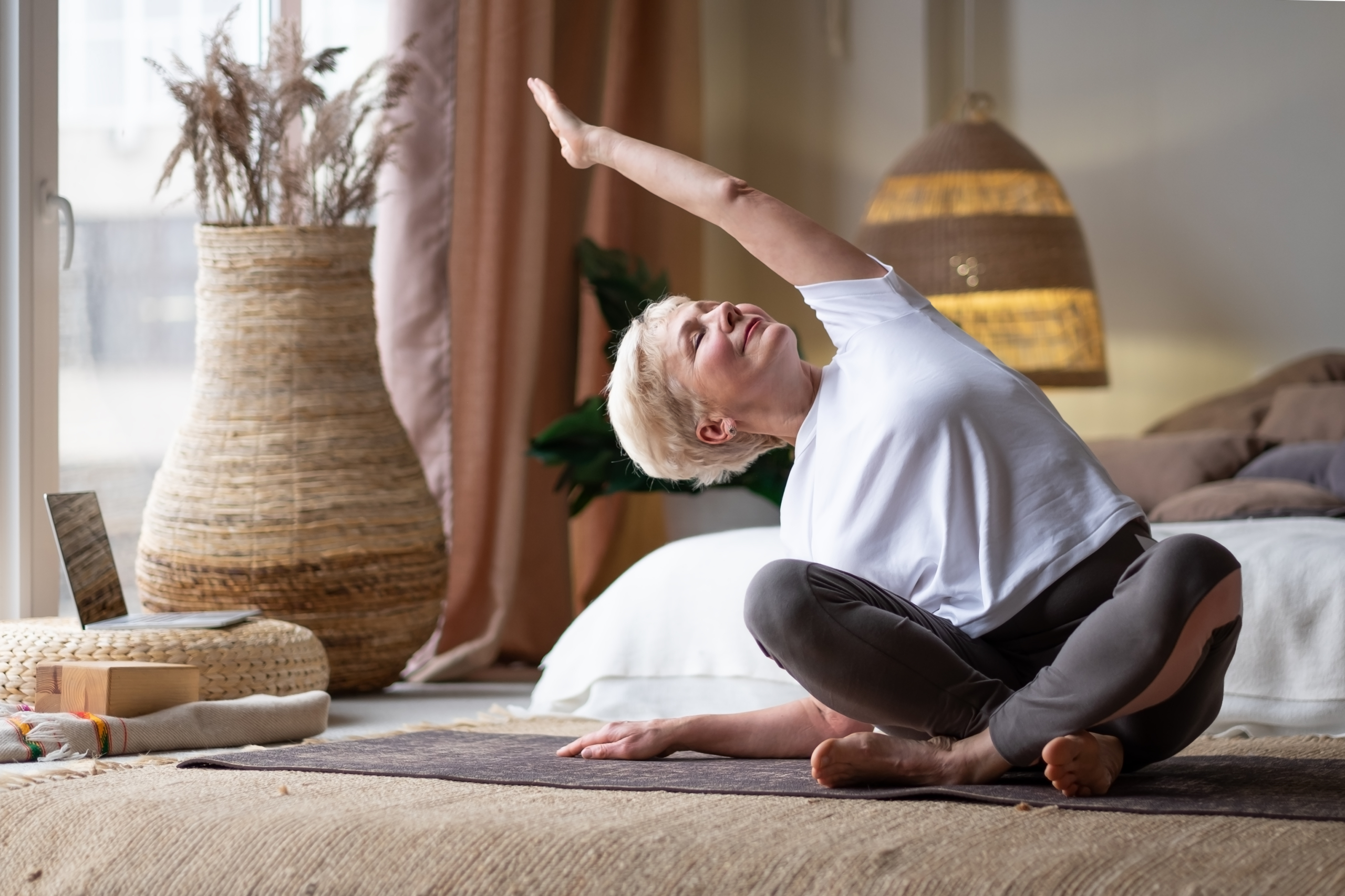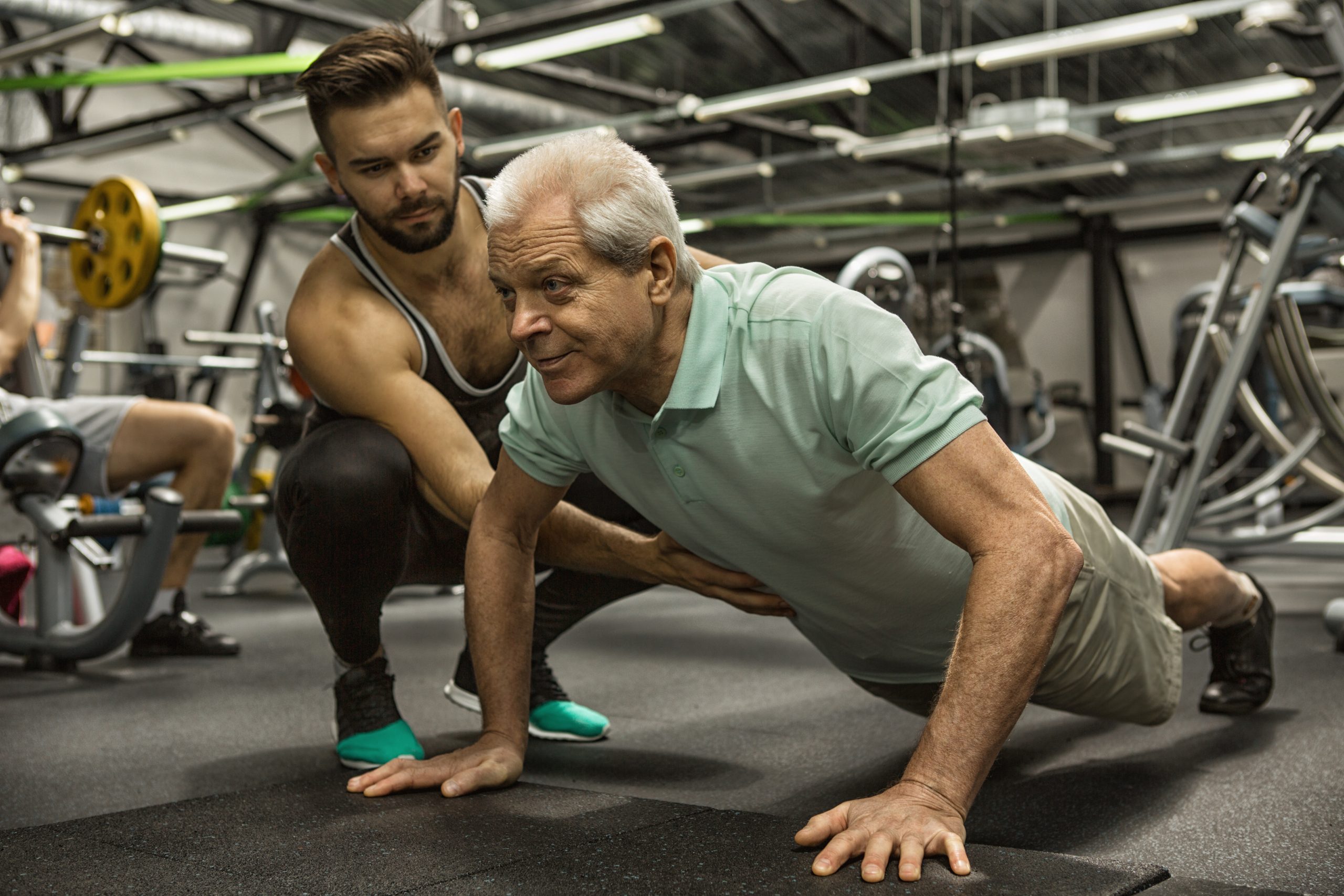
Our athletic therapists offer on-field and clinical assistance to a wide variety of athletes for common sports injuries.
Osteoarthritis (OA) is a common chronic condition that is characterized by the degeneration of joint cartilage and the underlying bone. It can cause pain, stiffness, and sometimes even mobility limitations, impacting one’s quality of life. However, osteoarthritis is not only manageable but also improvable with the right lifestyle changes. You can read our previous article on a few key lifestyle changes to better manage osteoarthritis here.
One key lifestyle change that can be incredibly effective is regular exercise.
Exercise: A Natural Remedy for Osteoarthritis
When you’re in pain, exercise might be the last thing on your mind. However, various studies have shown that regular physical activity can help reduce the symptoms of OA, improve joint function, and enhance overall well-being. In fact, exercise is considered a cornerstone in managing osteoarthritis.
The Importance of Regular Exercise for Osteoarthritis Management
Incorporating regular exercise into your routine can have a multitude of benefits for managing osteoarthritis.
Stronger Muscles Around Joints
The muscles around your joints act like natural shock absorbers. When they’re strong, they take some of the pressure off your joints. This not only reduces pain but also improves the stability of your joints, making it easier for you to move. A study published in Arthritis Care & Research found that strengthening exercises can significantly reduce OA knee pain and improve function.
Improved Flexibility
Regular exercise can help maintain the range of motion in your joints. Stretching exercises specifically can help keep your joints flexible and may even slow the progression of osteoarthritis. According to the American College of Rheumatology, flexibility exercises can help reduce stiffness and increase joint mobility in people with OA.

Weight Control
Exercise plays a crucial role in maintaining a healthy weight. Carrying extra weight puts additional stress on your weight-bearing joints, like your knees and hips. Losing even a small amount of weight can significantly reduce this stress. A study by Johns Hopkins Arthritis Center showed that losing just one pound of body weight reduces four pounds of pressure on the knees.
Better Joint Health
Engaging in regular physical activity helps keep joints healthy by stimulating the circulation of synovial fluid. This fluid acts as a lubricant, reducing friction between the cartilage and other tissues in joints, thus reducing pain and stiffness.
The benefits of exercise for osteoarthritis are backed by numerous scientific studies and expert opinions. “Exercise is the most effective non-drug treatment for reducing pain and improving movement in patients with osteoarthritis,” says Dr. Usha Chakravarthy, a specialist in Physical Medicine and Rehabilitation.
Identifying the Right Exercises to Manage Osteoarthritis
However, the kind of exercise you do and the intensity of your exercise needs to be determined by the joints affected by osteoarthritis.
Influence of Affected Joints on Exercise Choices
The area of your body affected by osteoarthritis significantly influences the type of exercises best suited for you. Different joints require different approaches.
Knee Osteoarthritis
For those with knee osteoarthritis, low-impact activities like swimming, cycling, or using an elliptical machine can be ideal. These exercises put less stress on your knees while still giving you a good workout. Strengthening exercises targeting the muscles around the knee—like the quadriceps and hamstrings—can also be beneficial.
Hip Osteoarthritis
If you have hip osteoarthritis, gentle range-of-motion exercises and stretching can help maintain joint flexibility. Strengthening the muscles around the hip, such as the glutes, can provide extra support and stability for the joint. Water-based exercises like aqua aerobics can also be beneficial as they allow for movement with reduced joint stress.
Hand Osteoarthritis
For hand osteoarthritis, finger and wrist stretches can help maintain flexibility and range of motion. Grip-strengthening exercises can also be beneficial. However, it’s important to avoid exercises that cause pain or discomfort in your fingers or wrists.
The Role of Severity in Determining Exercise Intensity
The severity of your osteoarthritis also plays a key role in determining the intensity of your exercise regimen. If you have mild OA, you might be able to engage in more vigorous activities without discomfort. However, if your OA is severe, lower-impact exercises may be more appropriate. Listen to your body and adjust your routine accordingly.
Importance of Professional Guidance
While understanding the basics of exercising with osteoarthritis is helpful, it’s crucial to seek professional guidance. A physical therapist or other medical or allied health professional can provide tailored advice based on your individual circumstances. They can help design an exercise program that considers the location and severity of your OA, your overall health, and your personal goals.
Remember, with osteoarthritis, exercise isn’t a one-size-fits-all solution. It’s about finding the right balance that allows you to stay active, manage your symptoms, and protect your joints.
Suitable Exercises for Those with Arthritis
Living with osteoarthritis doesn’t mean you have to give up on exercise. In fact, it’s more reason to embrace it! The key is to focus on “arthritis-friendly” exercises that can help manage symptoms without causing further joint damage.
Low-Impact Exercises
Low-impact exercises are a great way to get your heart rate up without putting too much stress on your joints. These include:
Walking
Walking is a safe and effective form of exercise for almost everyone, including those with arthritis. It’s low-impact, requires no special equipment, and can be done anywhere. Plus, it helps strengthen muscles, improve balance, and boost mood.
Swimming
Swimming and water aerobics are excellent choices for people with OA. The buoyancy of the water supports your body weight, reducing stress on your joints. Plus, moving in water provides gentle resistance, which can help build strength.
Cycling
Whether it’s on a stationary bike or cycling outdoors, this low-impact activity can help improve cardiovascular fitness, strengthen lower body muscles, and improve joint mobility without straining the joints.
Strength Training
Strength training helps build muscle mass, which can take pressure off your joints and improve stability. This can be done using resistance bands or light weights. Remember, it’s not about lifting heavy weights but rather about consistent, controlled movements.
Flexibility Exercises
Flexibility exercises can help maintain joint range of motion and reduce stiffness. These include:
Yoga
Yoga is a fantastic option as it combines gentle stretching with strengthening poses. It also promotes mindfulness and relaxation, which can help manage the stress often associated with chronic conditions like OA.
Stretching Routines
Regular stretching can help keep your muscles flexible and your joints moving freely. Aim to stretch every day, focusing on the areas affected by arthritis.
Personalized Exercise Plans
The most effective exercise plan is the one that caters to your individual limitations and capabilities.

It’s important to work with a healthcare professional or a physical therapist to create a personalized plan that takes into account your OA severity, fitness level, and personal goals.
Precautions While Exercising with Osteoarthritis
While exercise can be beneficial for managing osteoarthritis, it’s important to approach it with care and precaution. Here are some key considerations to keep in mind.
Understanding Personal Limits
One of the most important aspects of exercising with OA is understanding your personal limits. It’s crucial to listen to your body and not overdo it. Pushing yourself too hard can lead to pain and injury. Remember, it’s about consistency, not intensity. If an exercise causes you pain, stop doing it and consult a healthcare professional.
Importance of Warming Up and Cooling Down
Just like any workout regimen, warming up before you start and cooling down afterwards is essential when you have OA. A warm-up prepares your body for exercise, increasing blood flow to your muscles and reducing the risk of injury. Similarly, a cool-down helps gradually bring your heart rate down and prevent stiffness and soreness.
Proper Equipment and Form
Using the right equipment and maintaining proper form during exercise can help prevent injuries. For example, wearing supportive footwear can reduce the impact on your joints when walking or running. When strength training, focus on slow, controlled movements rather than heavy weights. If you’re unsure about the correct form, don’t hesitate to seek advice.
Seeking Professional Guidance
If you’re new to exercise or have severe OA, it’s a good idea to consult with a physical therapist or a trainer who understands arthritis. They can guide you on safe and effective ways to exercise, correct your form, and help you understand what’s normal discomfort and what’s a sign of potential injury.
While exercise is an essential part of managing osteoarthritis, it’s crucial to do it safely. Pay attention to your body, take necessary precautions, and seek professional guidance as needed.
Creating an Effective Exercise Routine for Osteoarthritis
Creating an effective exercise routine when you have osteoarthritis is all about balance, consistency, and gradual progression. Here are some tips on how to create a routine that works for you.
Start Slow and Gradually Increase Intensity
If you’re new to exercise or have been inactive for a while, it’s important to start slow. Begin with low-intensity exercises like walking or gentle stretching. As your fitness improves, gradually increase the intensity of your workouts. It’s not about how hard you can push yourself in one session, but about making consistent, sustainable progress.
Consistency is Key
Regular exercise is more beneficial than sporadic, intense workouts. Try to incorporate some form of physical activity into your daily routine. This could be as simple as a walk around the block or a short yoga session in the morning. The key is to make exercise a habit.
Track Your Progress
Keeping track of your progress can be a powerful motivator. Consider keeping an exercise diary or use a fitness app to log your workouts. Record not just what you do, but also how you feel during and after your workouts. Over time, you’ll likely see improvements in both your physical abilities and your symptoms, which can be incredibly motivating.
Balance Exercise with Rest and Other Management Methods
While regular exercise is important, so is rest. Make sure to give your body time to recover between workouts. Listen to your body and take extra rest days if needed.
Remember, exercise is just one part of managing osteoarthritis. It’s also important to maintain a healthy diet, manage your weight, get plenty of sleep, and follow any medication regimen or other treatments recommended by your doctor. Check out this article for more helpful lifestyle alterations that can support the management of osteoarthritis.
Management of OA Through Exercise: A Safe Approach
Living with osteoarthritis can be challenging, but you have the power to manage your symptoms and improve your quality of life. Incorporating safe and effective exercises into your daily routine can help alleviate symptoms, improve mobility, and enhance overall well-being.
However, it’s crucial to approach exercise with caution and understanding. Remember, the goal is to build a consistent, sustainable, and enjoyable exercise habit. It’s also important to balance your exercise routine with adequate rest, healthy eating, and other treatments recommended by your doctor. And most importantly, before starting any new exercise regimen, always consult with a healthcare professional or physical therapist who understands arthritis.
With patience, persistence, and the right guidance, you can build an exercise routine that works for you and supports your journey towards better health. So, take that first step today. Your body and mind will thank you for it!